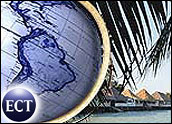
A new report by Media Metrix (Nasdaq: MMXI) division AdRelevance shows that while traditional companies are beginning to realize the marketing potential of the Internet, online advertising is dominated by dot-coms.
The report, “Dot-Coms in the Driver’s Seat,” revealed that despite recent shake-ups that have left some dot-coms floundering, dot-com advertisers outnumbered traditional advertisers online two-to-one.
“With the market’s recent performance and the increased pressure for dot-coms to turn profits, it’s interesting to see that the clear majority of the AdRelevance Top 200 Online Advertisers are dot-com companies,” said Charlie Buchwalter, vice president of media research for the Seattle, Washington-based AdRelevance. “When compared to traditional advertisers, the average dot-com appears to be spending more aggressively, typically even outspending traditional advertisers.”
More Advertisers, More Ads
In AdRelevance’s ranking of the Top 200 online advertisers for the second quarter of this year, there were more dot-coms than ever before. A dot-com is defined by AdRelevance as any company that originated on the Internet or whose existence is dependent upon the Internet.
The report found that the percentage of dot-com advertisers in the Top 200 rankings increased from 54 percent in July 1999 to 68 percent in June 2000.
In July 1999, the 108 dot-coms in the Top 200 were responsible for 64 percent of the total ad impressions by Top 200 companies. In June 2000, there were 138 dot-coms in the Top 200, and they were responsible for 75 percent of all impressions.
Industry Differences
On the whole, dot-coms dominate the online advertising scene, but in travel, 76 percent of advertisers are traditional companies; in software, 84 percent; hardware and electronics, 97 percent; and consumer goods, 97 percent.
Web media was the most highly advertised category — with 37.1 percent of all ad impressions — and had the highest percentage, 85 percent, of dot-com advertisers. Other categories favored by dot-coms were retail, with 74 percent, and business-to business (B2B), 61 percent.
Coming in a distant second in the race for most impressions was retail with 22.7 percent, followed by financial services with 15.3 percent, and B2B with 6.5 percent.
Dominating Dot-Coms
In some of the categories with more traditional companies advertising, dot-coms are nevertheless responsible for generating a majority of the ads. For instance, even though only 16 percent of the Top 200 software advertisers are dot-coms, they account for 86 percent of all ads within the industry.
Similarly, in the travel industry, only 24 percent of the advertisers are dot-coms, but they are responsible for 80 percent of all travel-advertising impressions.
“Despite the overall dominance of dot-com advertisers, traditional advertisers have managed to stake a claim in some industries,” Buchwalter said. “There’s no doubt in my mind that as traditional businesses become more comfortable with online advertising, they will begin to spend more of their budgets on the Internet — in fact that’s probably the next wave we’ll see hit the online ad industry. But, until that day comes, dot-coms are in the driver’s seat.”












































Social Media
See all Social Media